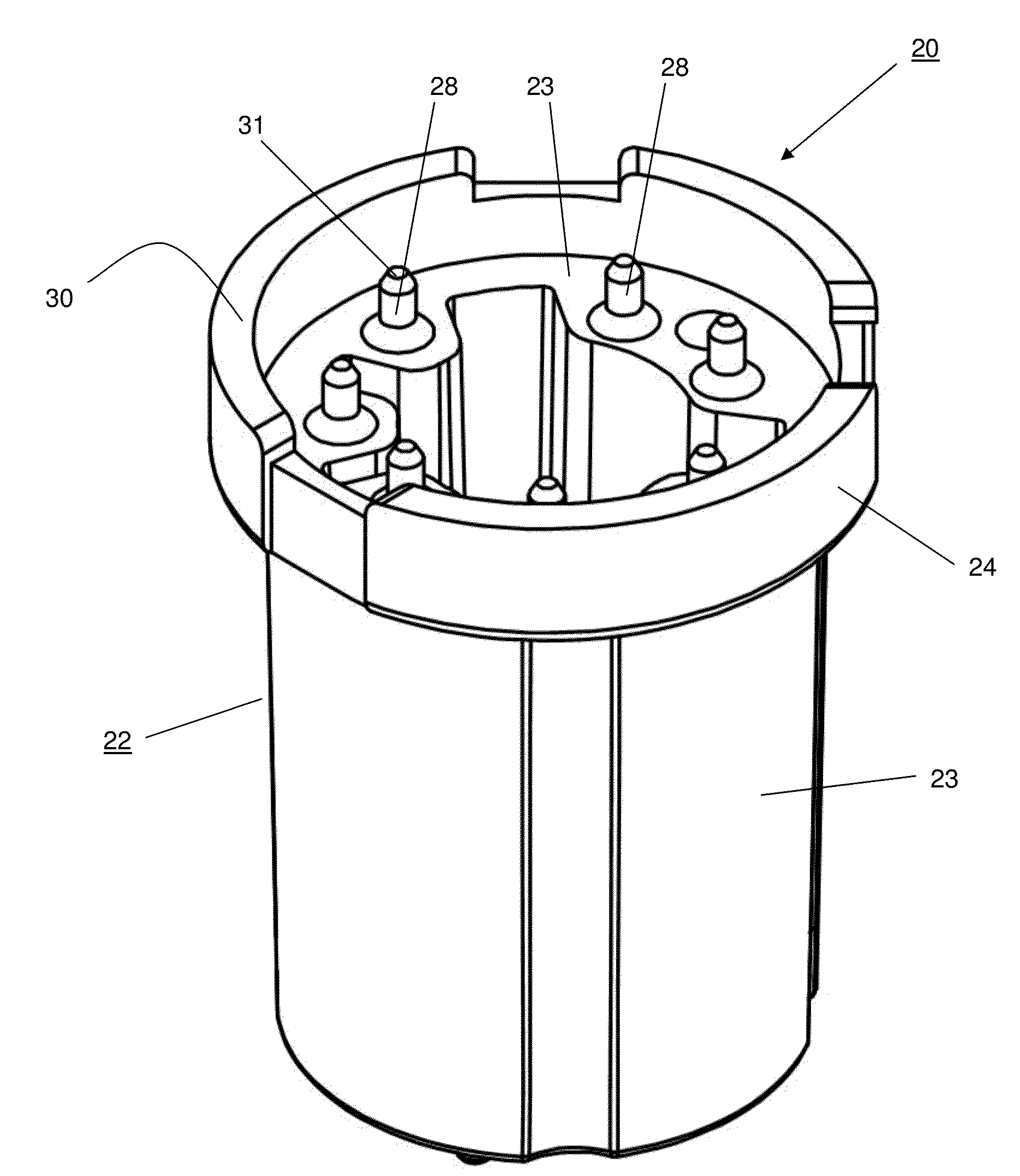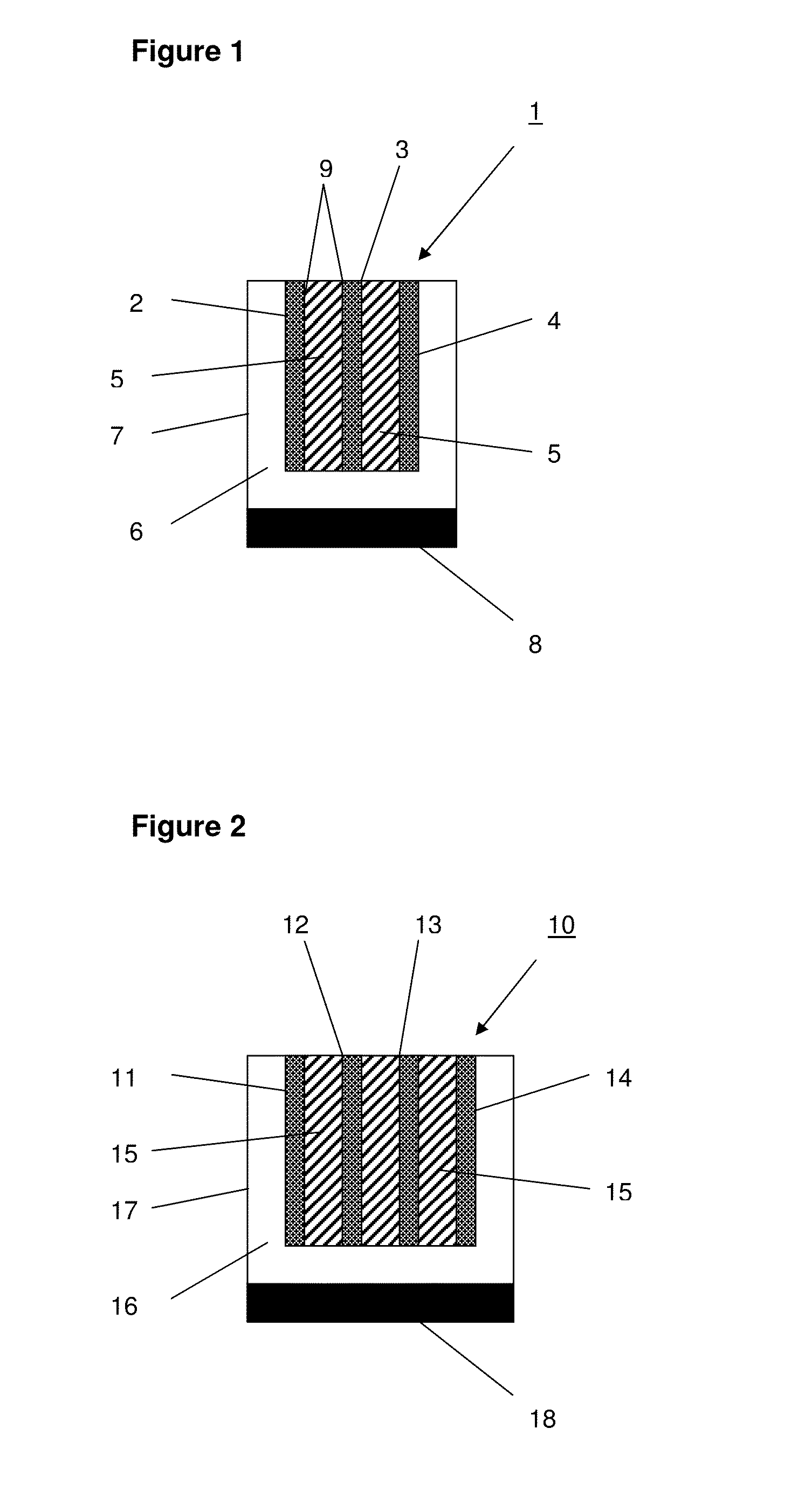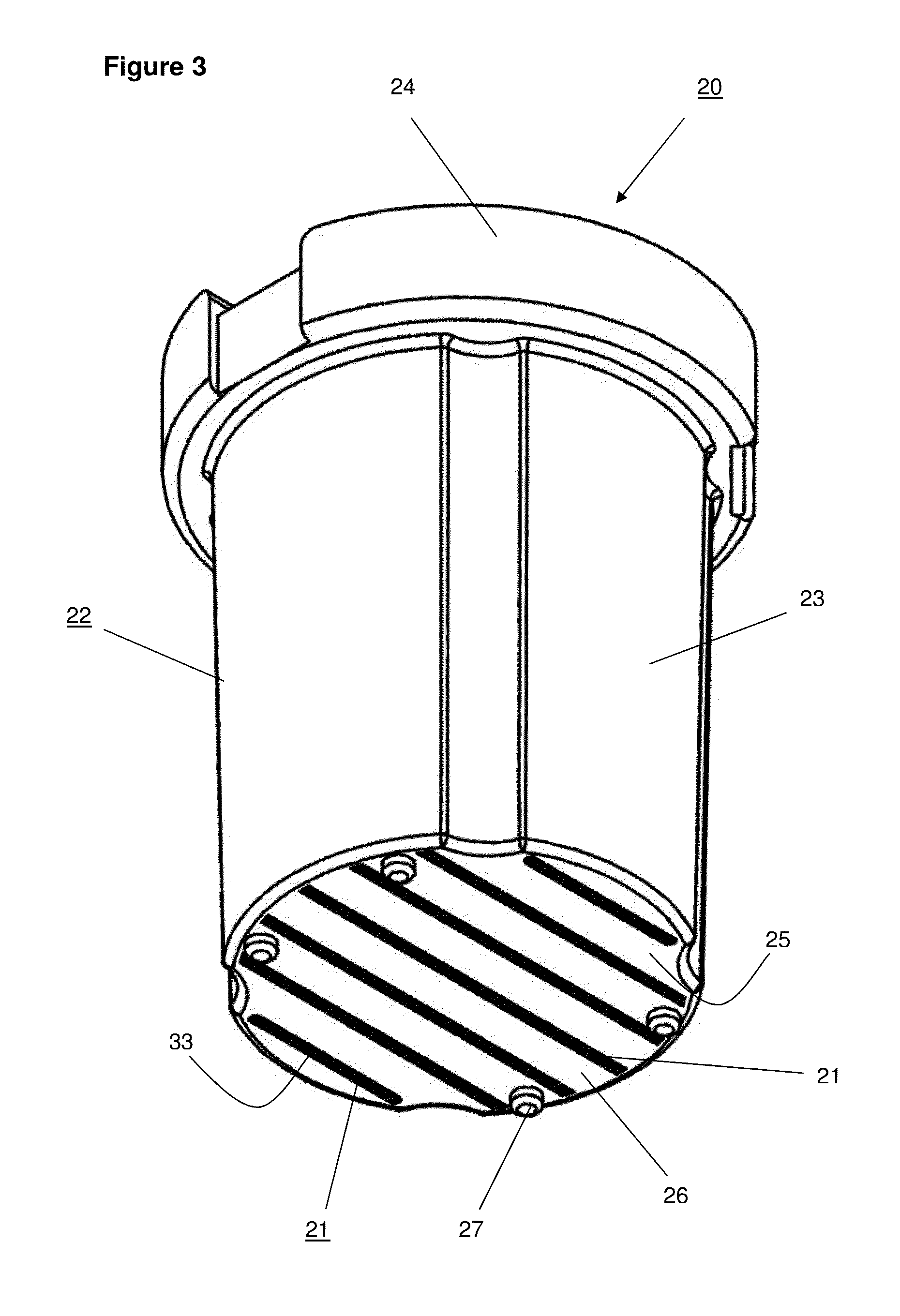Method and device for uniformly treating adherent cells
a technology of adherent cells and uniform treatment, which is applied in the field of can solve the problems of high mortality, unfavorable large leakage of cell free culture medium above the cells, so as to achieve efficient and uniform treatment of adherent cells, the effect of minimal strength
- Summary
- Abstract
- Description
- Claims
- Application Information
AI Technical Summary
Benefits of technology
Problems solved by technology
Method used
Image
Examples
Embodiment Construction
[0009]It is the object of the invention to provide a method and device enabling an efficient and uniform treatment of adherent cells using an electric field.
[0010]According to the invention, the object is achieved by a method of the initially mentioned kind, in which at least two electrodes are active electrodes when the voltage is applied for generating a first electric field, and at least a second electric field is generated, wherein at least one of the two former active electrodes is a floating electrode when the voltage is applied. If, for example, a first electrode is active, i.e. either positive or negative pole, when a voltage pulse are applied to the cells, the electric field underneath this electrode has minimum strength so that the cells orthogonally located underneath this electrode are not sufficiently electrically treated. Consequently, according to the invention a second electric field is generated wherein said first electrode is now floating (passive). That is, the el...
PUM
 Login to View More
Login to View More Abstract
Description
Claims
Application Information
 Login to View More
Login to View More - R&D
- Intellectual Property
- Life Sciences
- Materials
- Tech Scout
- Unparalleled Data Quality
- Higher Quality Content
- 60% Fewer Hallucinations
Browse by: Latest US Patents, China's latest patents, Technical Efficacy Thesaurus, Application Domain, Technology Topic, Popular Technical Reports.
© 2025 PatSnap. All rights reserved.Legal|Privacy policy|Modern Slavery Act Transparency Statement|Sitemap|About US| Contact US: help@patsnap.com



